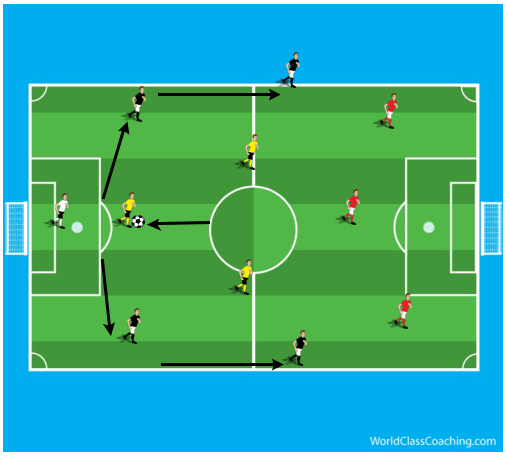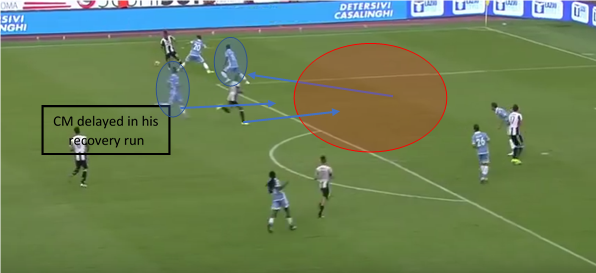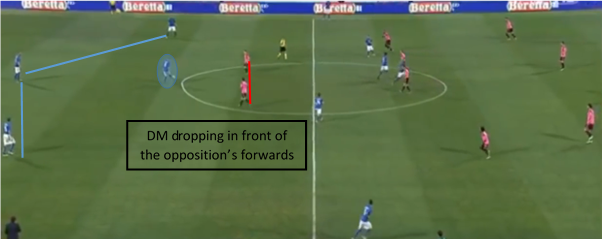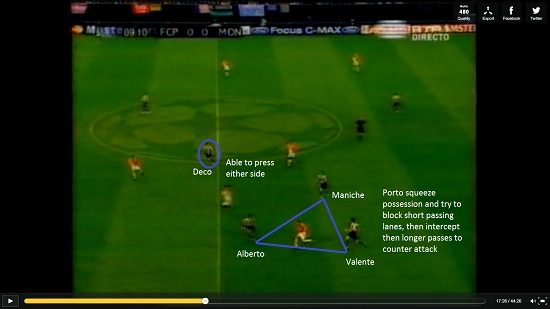By Stevie Grieve author of, Attacking in the 4-2-3-1
Coaches nowadays are always looking to find a way to take advantage of the spaces left by each formation that is commonly used in football, whether it is 4-2-3-1, 4-3-3, 4-4-2, 3-5-2 or 4-5-1. I feel that the way the game is going, the next major ‘trend’ in football may well be the utilisation of a flexible 4-6 man midfield/attack, in the form of a 3-3-3-1, 3-3-1-3 or a 3-2-4-1 or 3-4-2-1.
Most teams play with a lone striker and the space made around the centre backs made by forcing full backs to defend from wider positions means that they either allow more space for flexibility centrally, specifically around zone 14 (the zone UEFA studies suggested most goals are scored from), or they defend narrower, allowing the attack to pass the ball wide and then draw out full backs and wide midfielders, and try to exploit the space in the spaces they have just left to press the ball.
If we analyse Barcelona under Pep Guardiola, when Busquets drops deep, Alves and Abidal pushed into midfield, creating a flat 3-4-3 with Xavi and Iniesta in midfield, Pedro and Villa wide with Messi in the fairly new ‘False 9’ position between midfield and attack – playing as a center forward in a more withdrawn role to play between the lines and either bring out a center back, or pull deeper a central midfielder to pick him up.

If neither happens, he finds himself able to receive and turn with Pedro and Villa making diagonal inside runs from
Continue reading




